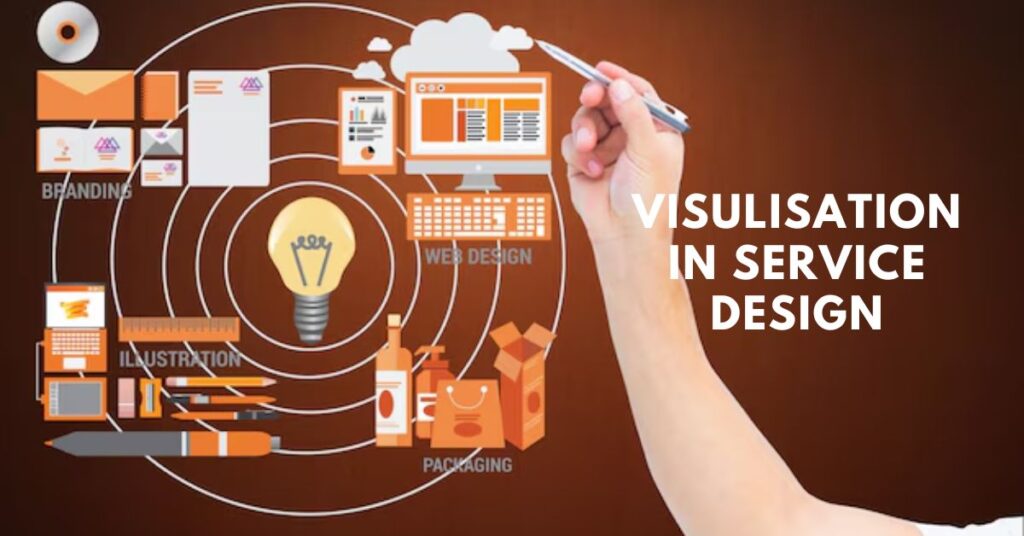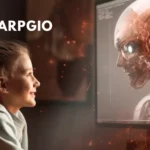Introduction to Service Design and Visualization
Service design is an intricate dance of creativity and strategy, where understanding customer needs takes center stage. At the heart of this process lies visulisation in service design a powerful tool that transforms abstract ideas into tangible experiences. By creating visual representations, service designers can illuminate paths for innovation and enhance user engagement.
Imagine walking through a bustling café designed with every detail in mind—from the layout to the menu presentation. Each element has been carefully crafted based on insights gathered from real users. This is where visualization comes into play; it turns complex concepts into clear visuals that everyone can grasp.
As we dive deeper into the art of visualization in service design, we’ll explore its benefits, techniques, and even some inspiring success stories. Get ready to unlock new perspectives as you discover how effective visualization can revolutionize your approach to designing services that truly resonate with people.
The Benefits of Visualization in Service Design
visulisation in service design provides clarity to complex processes. By creating visual representations, teams can better understand customer journeys and touchpoints. This understanding fosters empathy, allowing designers to step into the shoes of users.
Visual tools also enhance collaboration among stakeholders. When everyone can see the same images or diagrams, it aligns perspectives and encourages open dialogue. It minimizes misunderstandings that often arise from abstract concepts alone.
Moreover, visualization aids in problem identification. By mapping out services visually, gaps and inefficiencies become apparent quickly. This proactive approach leads to more effective solutions.
Visuals serve as powerful communication tools for presenting ideas to clients or management. They capture attention and convey messages succinctly—making proposals more persuasive and engaging.
Techniques for Visualizing Services
When visulisation in service design, various techniques can elevate understanding and communication. Journey mapping is a powerful tool that lays out the customer experience over time. It highlights key touchpoints, emotions, and pain points.
Service blueprints offer another layer of clarity. They combine user interactions with back-end processes. This dual perspective reveals how each component interlinks to deliver a cohesive service.
Storyboards inject creativity into service design by illustrating scenarios in which users engage with the service. These narratives help teams empathize with customers’ experiences.
Additionally, infographics simplify complex information visually. They make data digestible while conveying relationships between different elements of the service ecosystem.
Prototyping is also essential; creating tangible representations allows stakeholders to interact with concepts before full implementation, refining ideas through feedback loops and iterative designs.
Real-life Examples of Successful Service Design through Visualization
One standout example of successful visulisation in service design through visualization is Starbucks. The company uses a digital platform that allows customers to visualize their orders in real time. This not only enhances the customer experience but also builds trust and transparency.
Another great case is Airbnb, which employs journey maps to illustrate user experiences. By visualizing every touchpoint, they can identify gaps and improve service offerings.
In healthcare, the Cleveland Clinic has utilized process flow diagrams to streamline patient interactions. These visuals help staff understand workflows better, improving overall efficiency.
These examples showcase how effective visualization can transform services. They make complex processes easier to grasp for both users and providers alike. Visualization fosters collaboration among teams, ensuring everyone shares a common understanding of objectives and challenges within their service design efforts.
Challenges and Limitations of Visualization in Service Design
While visualization in service design offers numerous advantages, it also presents several challenges. One significant issue is the risk of oversimplification. Complex services can be reduced to basic visuals that fail to capture their intricacies.
Another challenge lies in stakeholder interpretation. Different team members may interpret visualizations differently, leading to miscommunication or conflicting ideas about the service’s direction.
Resource constraints often pose limitations as well. Not all organizations have access to advanced tools or skilled personnel capable of creating effective visual representations.
Additionally, over-reliance on visual aids can stifle creative thinking. Teams might become too focused on what they see instead of exploring innovative solutions beyond those boundaries.
Adapting existing processes and systems to incorporate these visual elements can be daunting for some organizations, particularly larger ones with established workflows.
Tips for Using Visualization Effectively in Service Design
To harness the power of visualization in service design, start by clearly defining your objectives. Understand what you want to achieve before creating visual elements.
Involve stakeholders early in the process. Their insights and feedback can guide your visualizations toward better alignment with user needs.
Utilize a variety of formats. Flowcharts, customer journey maps, and infographics each serve distinct purposes. Choosing the right format enhances comprehension.
Keep visuals simple yet impactful. Avoid clutter that distracts from the core message. A clean design helps maintain focus on essential information.
Regularly review and iterate on your visuals based on user interactions and experiences. Adaptability is key to ensuring effectiveness as designs evolve over time.
Ensure accessibility across all platforms where these visuals will be shared or displayed for maximum reach and engagement with your audience.
Conclusion
visulisation in service design has emerged as a powerful tool that enhances the way teams conceptualize and communicate their ideas. It bridges the gap between abstract concepts and tangible experiences, making it easier for stakeholders to grasp complex services.
The benefits of employing visualization are numerous. From improving collaboration among team members to facilitating clearer communication with clients, these techniques can lead to more effective designs that resonate with users. Techniques such as journey mapping or service blueprints allow designers to see the entire ecosystem of a service at once, identifying pain points and opportunities for improvement.
Real-life examples highlight how organizations have successfully integrated visualization into their design processes. Companies like Airbnb have used storyboards and prototypes to refine user interactions, ensuring a seamless experience from start to finish.
However, it’s essential not to overlook some challenges associated with visualization in service design. Misinterpretations can arise if visuals are unclear or overly complex. Additionally, relying too heavily on visual tools may distract from fundamental aspects of service planning.
For those looking to harness the power of visualization effectively, incorporating simple yet clear graphics is key. Engaging stakeholders early in the process through collaborative sessions can also foster alignment around shared goals.
Harnessing this technique opens up new dimensions in understanding user needs and streamlining service delivery pathways. As businesses evolve, embracing visualization will undoubtedly remain vital for achieving innovative solutions within service design.
FAQs
1. What is visualization in service design?
Visualization in service design refers to the use of visual tools and techniques to represent and communicate complex service concepts, processes, and user experiences. It transforms abstract ideas into clear, tangible visuals such as journey maps, service blueprints, and infographics, enhancing understanding and collaboration among stakeholders.
2. How does visualization benefit service design?
Visualization clarifies complex processes, fosters empathy by highlighting customer journeys, enhances collaboration by aligning stakeholder perspectives, identifies gaps and inefficiencies, and improves communication by making ideas more engaging and easier to understand.
3. What are some common techniques for visualizing services?
Common techniques include journey mapping, which outlines the customer experience over time; service blueprints, which combine user interactions with back-end processes; storyboards, which illustrate user scenarios; infographics, which simplify data; and prototyping, which creates tangible representations of ideas for feedback.
4. What are the challenges associated with visualization in service design?
Challenges include the risk of oversimplifying complex services, potential misinterpretations among stakeholders, resource constraints, over-reliance on visual aids that might limit creativity, and difficulties in adapting existing processes to incorporate visual elements.
5. How can I effectively use visualization in my service design projects?
To use visualization effectively, clearly define your objectives, involve stakeholders early, choose the right visual formats for different purposes, keep visuals simple and impactful, review and iterate based on feedback, and ensure accessibility across all platforms.







